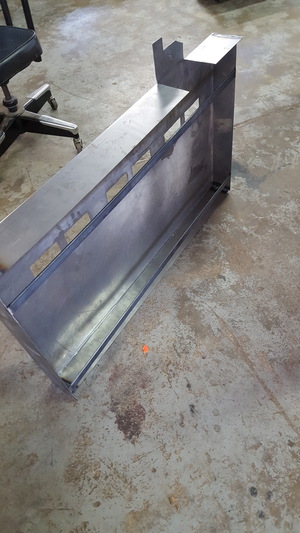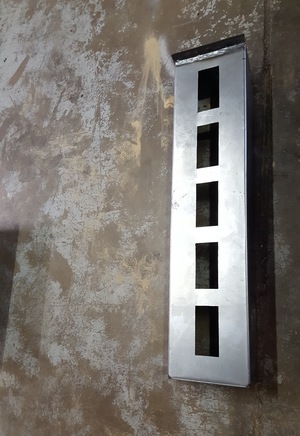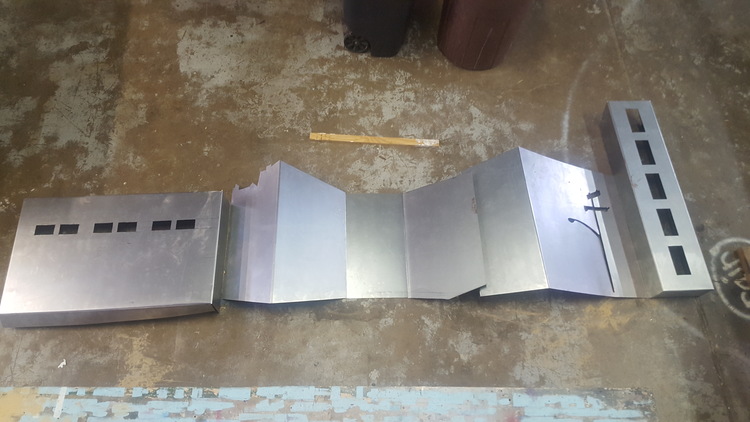This is the fourth in a series of guest posts by the enamel artist Kat Cole. This post previously appeared on her blog.
 As I prepared to build the pieces, I asked for assistance from the experts at KVO Industries about fabricating and their construction techniques. Just as in jewelry, the function of these panels have to be considered in the design phase. As an enameling factory, KVO strives for the most constant results, with most of their work being on flat panels. I learned that they prevent warping by bending small flanges on the edges and weld the corners. By comparison, the panels I am making are quite complex with many bends and cut out areas. Warping will be an issue as these pieces are heated in the kiln.
As I prepared to build the pieces, I asked for assistance from the experts at KVO Industries about fabricating and their construction techniques. Just as in jewelry, the function of these panels have to be considered in the design phase. As an enameling factory, KVO strives for the most constant results, with most of their work being on flat panels. I learned that they prevent warping by bending small flanges on the edges and weld the corners. By comparison, the panels I am making are quite complex with many bends and cut out areas. Warping will be an issue as these pieces are heated in the kiln.
This will also be my first experience using a kiln that requires the work to be hung to go in and out of the kiln. Each piece has to have a way to hang so it is stable in the kiln and is not likely to sag under its own weight. Additional tabs or holes may be required. I am using all 18 gauge and limiting the number of welded seams so there are no significant differences in thickness throughout the piece.
 The enameling of these surfaces will pose an exciting challenge for both me and the KVO employees, as we will both be exploring new territory. A number of the panels are constructed from mild steel, and will have a pitted surface, enameled without a ground coat, an effect often seen in my jewelry work. This surface comes from the carbon in the steel rising to the surface as the piece is fired in a 1500 degree kiln.
The enameling of these surfaces will pose an exciting challenge for both me and the KVO employees, as we will both be exploring new territory. A number of the panels are constructed from mild steel, and will have a pitted surface, enameled without a ground coat, an effect often seen in my jewelry work. This surface comes from the carbon in the steel rising to the surface as the piece is fired in a 1500 degree kiln.
Although I enjoy the surface achieved using common mild steel, I felt it would be best to use the most compatible base material while dealing with the large surfaces, which is a special type of steel alloy called enameling iron or de-carbonized steel. The alloy is made specifically for the enamel industry. Due to the extra low carbon content, the steel makes a good bond with the enamel.
This steel, unlike much cheaper and ubiquitous mild steel, is ordered in bulk from one of only a few suppliers in the U.S. and is nearly five times the cost. Maquettes and careful planning were necessary to make sure each piece was constructed correctly and there was little wasted material.

Recent Comments